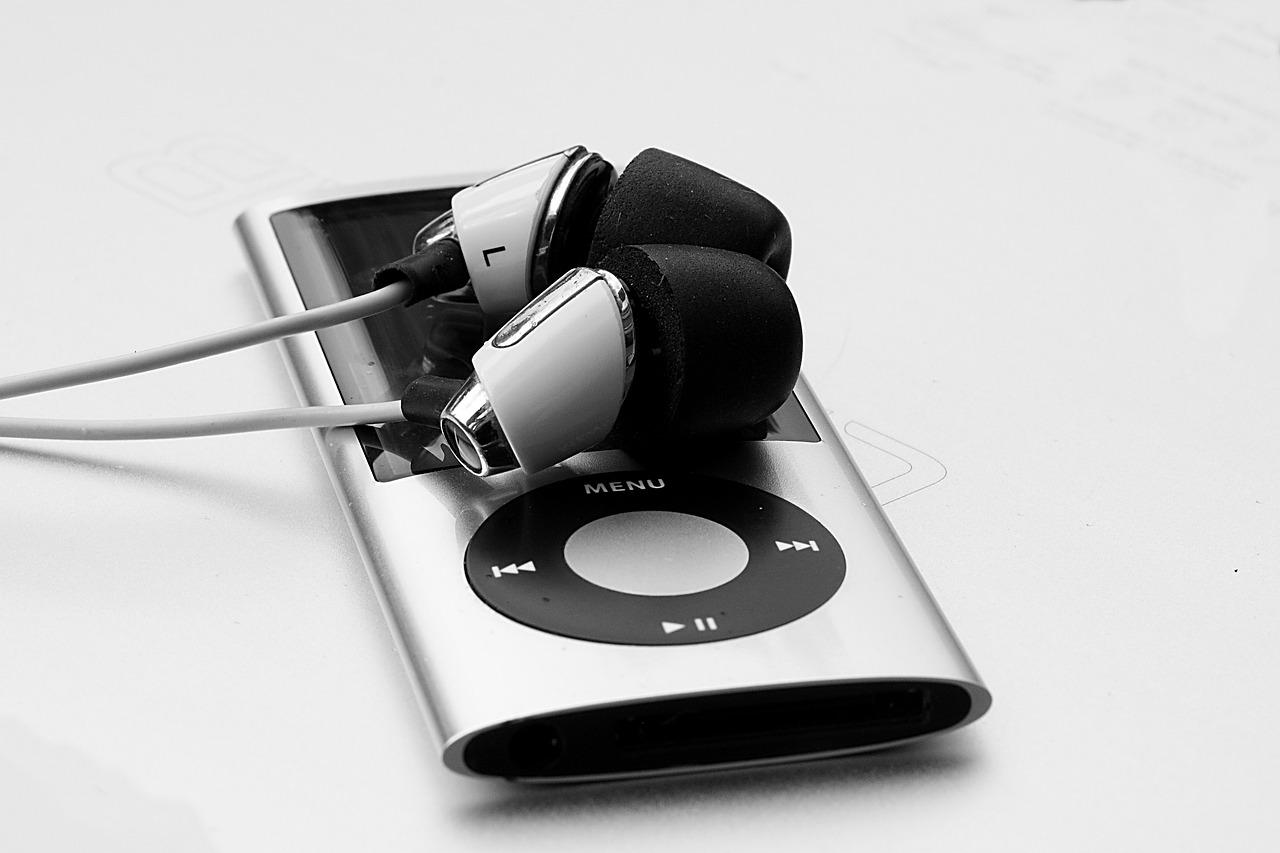Are you tired of scrolling through your video library only to find that the audio tracks you love are buried in MP4 files? Sometimes, you just want that perfect soundtrack or podcast episode stripped away from the video, allowing you to enjoy it anytime, anywhere. Well, you’re in luck! Converting MP4 files to MP3 is easier than pie and can be done in just a few simple steps. In this article, we’ll guide you through the process of unlocking your audio content, giving you the freedom to listen to your favorite tunes or spoken word without the need for a screen. Whether you’re a tech newbie or a seasoned pro, our easy-to-follow tips and tricks will have you extracting audio in a snap. Let’s dive in and turn those video files into a portable audio experience!
Understanding MP4 and MP3: The Basics of Audio Formats
When diving into the world of audio and video, it’s essential to grasp the difference between various formats, especially MP4 and MP3. Think of it like choosing the right outfit for the occasion: each format serves a specific purpose, and understanding their roles can help you make smarter choices. MP4 is like a multi-tasking Swiss Army knife, designed to handle not just audio, but also video, subtitles, and chapters. It’s widely used for films, TV shows, and online streaming because of its versatility. On the flip side, MP3 is your go-to for music and audio tracks. It streamlines files by compressing the audio without sacrificing much quality, making it perfect for portable devices where storage space is at a premium.
<p>Here’s a quick comparison to help you visualize:</p>
<table class="wp-block-table">
<thead>
<tr>
<th><strong>Format</strong></th>
<th><strong>Type</strong></th>
<th><strong>Uses</strong></th>
<th><strong>File Size</strong></th>
</tr>
</thead>
<tbody>
<tr>
<td><strong>MP4</strong></td>
<td>Video + Audio</td>
<td>Movies, YouTube, Streaming</td>
<td>Varies (Depends on Content)</td>
</tr>
<tr>
<td><strong>MP3</strong></td>
<td>Audio Only</td>
<td>Music, Podcasts, Audiobooks</td>
<td>Small (1 MB per minute)</td>
</tr>
</tbody>
</table>
Understanding these differences can pave the way for smoother audio experiences. Imagine wanting to savor your favorite song on a drive—MP3 is your best friend there. If you’re looking to enjoy a movie night, MP4 is where you’ll want to land. The interplay between these formats is not just a technicality; it significantly enhances how we consume and enjoy media.
Choosing the Right Tools for Conversion: Software and Online Options
When it comes to converting MP4 files to MP3, the first step is selecting the right software or online tool that fits your needs. There’s a plethora of options out there, each with its unique features. Desktop applications often provide more extensive functionality and might be a good fit if you convert files frequently or require batch processing. Here are some popular choices:
- VLC Media Player - Not just for playing videos, this versatile tool allows you to easily convert files.
- Freemake Video Converter – A user-friendly interface that’s perfect for beginners and offers multiple conversion formats.
- Audacity - While primarily an audio editing tool, it also lets you import MP4 files and export them as MP3s.
On the other hand, online converters can be a quick and hassle-free solution if you’re looking to convert files on the go. With just a web search, you can find a variety of tools that require no downloads, saving you time and space. Here’s a quick rundown of some reliable online converters:
| Tool Name | Key Features |
|---|---|
| Online Audio Converter | Supports multiple formats, simple interface. |
| CloudConvert | Integration with cloud storage, high-quality conversion. |
| Zamzar | Fast conversion, no software install. |
By carefully weighing your needs against the options at hand, you can choose a tool that enhances your audio experience, making those MP3 files just a click away.
Step-by-Step Guide to Convert MP4 to MP3: Simple Methods Explained
If you’re looking to transform your MP4 videos into MP3 audio files, you’ve landed in the right spot! There are several straightforward methods to get this done, and you’ll be enjoying your favorite soundtracks in no time. Let’s kick things off with some user-friendly software options. Applications like VLC Media Player and Audacity are not just reliable but also easy to use. Here’s how you can make them work for you:
- VLC Media Player: Open the program, click on “Media” then “Convert/Save”. Add your MP4 file, hit “Convert”, select “Audio – MP3” from the profile options, and click “Start”.
- Audacity: Import your MP4 file, navigate to “File”, then ”Export”, and choose “Export as MP3”. Just make sure you have the LAME MP3 encoder installed for a seamless experience.
On the go and prefer online tools? No problem! Websites like Online Audio Converter and Zamzar can do the trick without needing to download any software. Just upload your MP4 file, select MP3 as your desired format, and click convert. In mere minutes, you’ll have an MP3 file ready for your playlist. Below is a simple comparison of these options:
| Method | Ease of Use | Requirements |
|---|---|---|
| VLC Media Player | Easy | Installed Software |
| Audacity | Moderate | Installed Software & LAME |
| Online Converter | Very Easy | Internet Connection |
These methods cater to different preferences, whether you’re a die-hard software lover or someone who wants convenience at their fingertips. So, what’s stopping you? Choose your method, convert those files, and let the melodies play!
Tips for Optimizing Audio Quality Post-Conversion: Ensuring the Best Output
Once you’ve converted your MP4 files to MP3, the next step is ensuring that the audio quality shines through. First, consider using a reliable audio editing software to enhance the sound. Tools like Audacity or Adobe Audition allow you to adjust equalization levels, remove noise, and even enhance certain frequencies. When you import your MP3 file, take a moment to listen closely. Are there any unwanted sounds? Any parts that seem too loud or too soft? Make those adjustments before finalizing your track. Remember, just like adding the right spices to a dish, these tweaks can significantly impact the overall flavor of your audio.
Moreover, always pay attention to your output settings during conversion. Bitrate plays a crucial role in audio quality. For best results, stick to a bitrate of at least 192 kbps or even better, 320 kbps if file size isn’t a concern. Here’s a quick cheat sheet for your reference:
| Bitrate | Audio Quality | File Size |
|---|---|---|
| 128 kbps | Good | Smaller |
| 192 kbps | Very Good | Medium |
| 320 kbps | Excellent | Larger |
By taking these steps, you not only ensure a crystal-clear audio experience but also preserve the nuances of your original sound, creating an MP3 version that’s worthy of your time and effort.
The Conclusion
And there you have it—the keys to unlocking your audio treasures! Converting MP4 to MP3 isn’t just a techy task; it’s like transforming a vibrant painting into a soothing watercolor, retaining all those essential strokes while making it easier to hang in your daily life. Whether you’re looking to create a killer playlist for your next road trip, or simply want to enjoy your favorite tunes on the go, these simple steps put the power back in your hands.
So, why wait? Dive in, give your media library a refresh, and let those audio gems shine! With just a few clicks, you can liberate your sound from the confines of video formats and keep the rhythm alive wherever you are. Remember, it’s all about enjoying the music that moves you. Happy converting! 🎶





